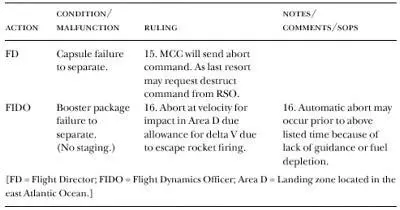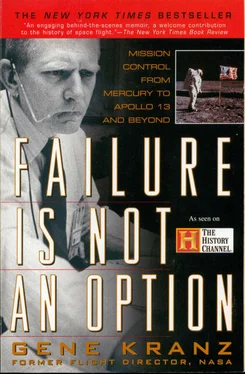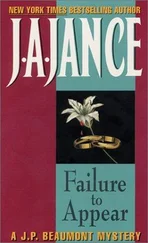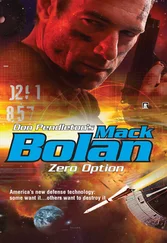We sat by the consoles, not talking for several seconds. Then, one by one, the controllers closed their countdown books and started to pack their documents.
My message to the remote site teams was succinct: “MA-3 WAS TERMINATED BY RANGE SAFETY AT 43 SECONDS INTO FLIGHT. STAND BY FOR DEBRIEFING.”
The destruction of the Mercury-Atlas 3 left us dazed and disheartened. We had gone to launch feeling that with three successful unmanned suborbital missions the jinx seemed broken, the odds were turning in our favor. Then the Atlas had to be blown up.
There was no cheer as the Mercury team retired to the bar at the Holiday Inn in Cocoa Beach and waited for Walt Williams, the operations director, and the launch team to finish the press conference. We knew they would take a beating. We had no time to lick our wounds or feel sorry for ourselves and no one had much to say. Numb with shock, frustration, and anger, we were uncertain about the impact of this spectacular failure on the entire program. We did know that it would mean more time at the Cape, more time away from our families. But did we really know what the hell we were doing? The Atlas was the key to orbital flight and we had racked up two Atlas failures in three Atlas missions.
When we debriefed and vented our frustration over drinks at the bar, it was all in the family. During the missions, Kraft set the tone when we lost our composure. He knew that he could not show any uncertainty to his team. In Mercury Control there was no room for displays of emotion. Kraft allowed himself an occasional broad smile and lit up a cigar when his gang did well. When we failed, maybe he would mutter a curse word or two. His message from the earliest Mercury days: we were the visible point men for the program and we had to maintain a calm, professional, and confident image. But, as long as no outsiders, especially press, were around, we could let it hang out when we left the Cape and hit the bar.
We didn’t even have the luxury of a day off. We debriefed, wrote our reports, and, on April 26, 1961, returned to Mercury Control. With only seven days to prepare for our first manned flight, our self-confidence was badly shaken and we all shared the same unspoken fear: in only a few days, would we be crowning our first space hero—or picking up pieces of him all along the Eastern seaboard? We attacked the final days of the training schedule with a renewed urgency. Everyone connected with the program was now consumed with one goal: the successful flight of America’s first man in space. We simply could not accept, or even contemplate, another failure.
It was the top layer of NASA management which was directly in the line of fire coming from Congress and the executive branch. Our new administrator, James Webb, who was everybody’s boss, didn’t exactly deflect criticism when he said, “This present program is not designed to match what the Russians may do.” Reporting to him for manned space flight were Wernher von Braun at Marshall Space Flight Center, Harry Goett at Goddard Space Flight Center, and Robert Gilruth at the Langley Research Center. (Mercury preflight operations at the Cape were run by a division headed by G. Merritt Preston and reported to Gilruth.)
Gilruth, director of Project Mercury and boss of the Space Task Group, was the pioneer who focused the Mercury effort. He was regarded with great affection by those who worked under him. Starting at Langley in 1937, he had a sterling record of achievement in flight-testing. By the late 1950s his people were the most knowledgeable on high-speed flight research and he was the obvious choice to form and lead the Space Task Group.
Gilruth’s Washington counterpart was George Low, an Austrian whose family fled to America when Germany invaded and occupied his native land. After serving in the Army in World War II, he worked for Convair and then was chief of special projects at the National Advisory Committe for Aeronautics—NACA—the predecessor of NASA. In the summer of 1958 Low was tasked to organize a new space agency and became the chief of manned space flight during the agency’s early years. He was absolutely determined to put a man on the Moon, believing only such a bold goal would sustain the manned space effort. Personally, I would settle for rockets that worked.
In the first two years, we spent almost half our time on temporary duty at the Cape. When we left our homes and families behind, we never knew whether to pack for a few hours or a month. We lived out of our suitcases, in nondescript motels, coping with loneliness, too little perdiem, and too many failed countdowns. Invariably we would go home to find our wives feeling neglected and frustrated. You have no doubt heard the saying “Behind every great man is a woman”—and behind her is the plumber, the electrician, the Maytag repairman, and one or more sick kids. And the car needs to go into the shop.
To make matters worse, most of the wives had a postcard image of sun-washed beaches and a kind of intergalactic glamour. We felt this pressure and knew we could not resolve it. The beach was only a rumor to most of us, and glamour was a tub of beer on ice. The Cape Canaveral area was hardly the glossy Florida of Miami or Fort Lauderdale, but it was a community full of solid, decent working people, who encouraged us by their support for our fledgling space program.
We didn’t have nine-to-five jobs. Pad tests, simulations, and practice countdowns are driven by launch pad activity. Launch preparation is more an art than a science, with the high priests (test conductors) of the blockhouse, in charge of the countdown, dictating the overall schedule. Our job at the Mission Control Center was to be ready whenever the launch team needed us. The MCC support for the capsule and booster launch pad tests usually started with the test conductors’ call to console stations about 2 A.M., so the controllers usually hit the sack about sundown and arrived at Mercury Control about 1 A.M. to prepare for the test.
The flight rules that were a mystery in the beginning now anchored me at the center of the mission policy and decision process. They were an upscale equivalent of the Go NoGo criteria we used in aircraft flight tests. I had inherited the rule-recording job when Kraft sent me to the Cape for the first Mercury-Redstone test. This task opened the door for me to every technical aspect of Mercury operations. In the early months, I was the scribe sitting in on Kraft’s meetings with crews, controllers, and management. I wrote out the record of the decisions of the meetings, putting them in the flight rule format, defining each decision as a series of conditions followed by the action procedure.
The Mercury rules summary was thirty pages long. Many of the rules were procedural in nature and placed a heavy weight on the judgment of the controllers. Go or NoGo conditions were underlined in vivid green or red. The value of compiling and defining rules was not in the document itself as much as it was in hashing out Go NoGo stipulations in team meetings. The rules were set up on each page in this fashion:

Frequently, Kraft would leave a team meeting disagreeing with the results. The controllers and doctors were too conservative for his way of thinking. After reflecting for a while, Kraft would say, “I didn’t like their input. When you write the rules, let’s do it this way.” Many of the critical flight policies were determined over dinner at Ramon’s restaurant, late at night in one of the bull sessions, or during a lull after a tough training run.
No matter what the rules said, the ultimate authority was the operations director, Walt Williams. Born in New Orleans and an LSU graduate, Williams worked for Martin Aircraft and then at Langley, where he concentrated on control and stability systems during World War II. In 1956 he was head of engineering for the X-1 project (our first aircraft to break the sound barrier). He went on to be the director of virtually every supersonic test program for jet-and rocket-propelled aircraft and by 1958 was head of the X-15 test committee. He had been assigned as Gilruth’s deputy for Project Mercury, and was the feared but highly respected boss of every aspect of Mercury operations.
Читать дальше













